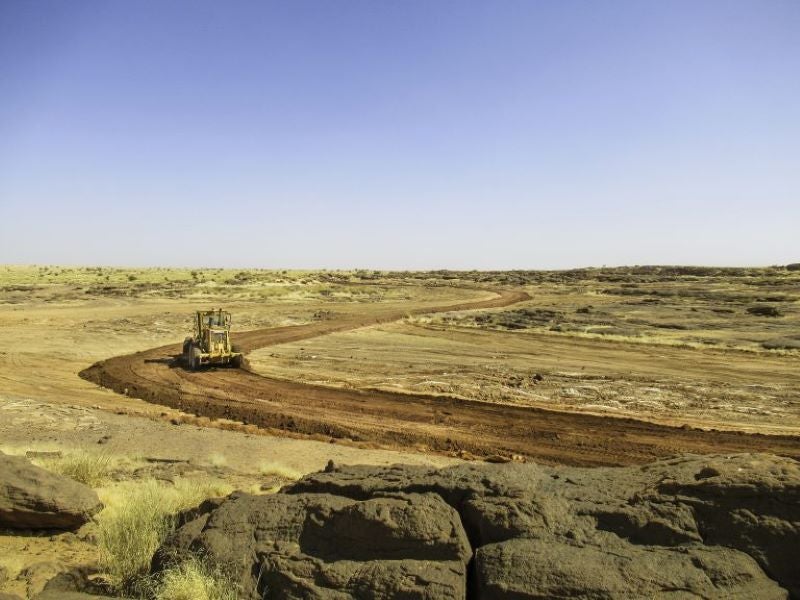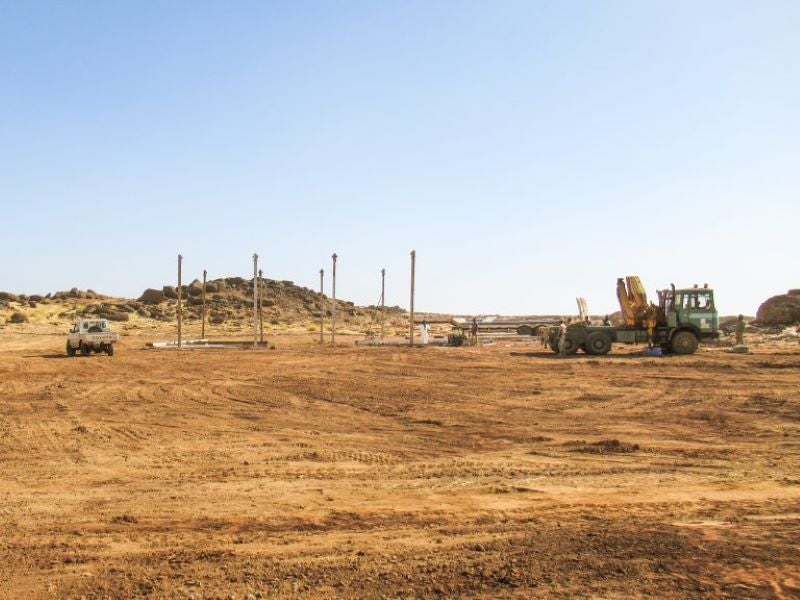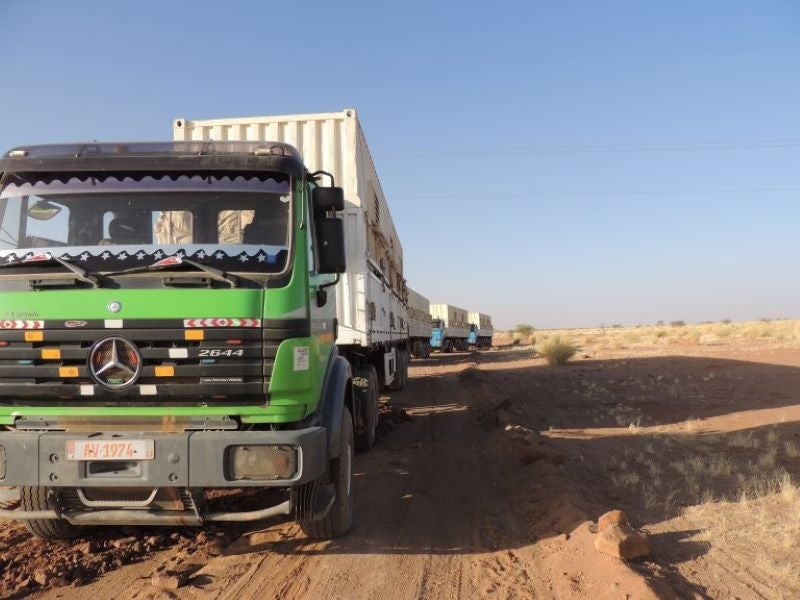The Dasa uranium project is an underground mine being developed in Niger by Global Atomic, a uranium mining company based in Canada.
A preliminary economic assessment (PEA), which focused on the development of the Flank Zone of the project, was filed in May 2020. Completed in November 2021, the feasibility study (FS) is based on phase one development of the project.
The FS highlighted an initial life of mine (LOM) of 12 years and covers less than 20% of the Dasa project mineralisation. The project is estimated to involve an investment of approximately $208m and have an annual production capacity of 3.8 million pounds (Mlb) of triuranium octaoxide (U₃O₈).
Excavation of a box-cut at the project site is estimated to commence in the first quarter (Q1) of 2022. Construction of the processing plant is expected to commence in 2023, with commissioning planned for 2024. The project is envisaged to produce yellowcake for sale by January 2025.
Dasa uranium project location and geology
The Dasa uranium project is located within the Adrar Emoles 3 permit, 105km south of Arlit, central Niger.
The high-grade uranium deposit is located within the Tim Mersoï sedimentary basin, which is part of the much larger Iullemeden Basin. The age of the local geological composition ranges between Cambrian and lower Cretaceous. The rocks found in the area are primary clastic sediments such as sandstone, siltstone and shale, along with some minor carbonates.
Mineralisation and reserves of the Dasa property
The major uranium mineralisation host rocks at the Dasa property are carboniferous sedimentary formations. The uranium in many deposits within the Tim Mersoï Basin generally occurs in oxidised form. The primary tetravalent minerals include coffinite accompanied by pitchblende and silico-titanates of uranium.
The mineralisation also includes uranium hexavalent minerals such as uranophane and meta-tyuyamunite located in the Imouraren and TGT-Geleli deposits.
The proven and probable mineral reserves of the Dasa uranium project were estimated at 4.1 million tonnes (Mt) of ore grading 5,267ppm (parts per million) of U₃O₈, as of November 2021.
Mining methods at Dasa uranium project
The Dasa project will be a fully-mechanised underground uranium mining operation using a transverse long-hole open stoping (LHOS) method with cemented hydraulic fill.
The underground mine access will be via a single decline with an 8° gradient, located in the footwall of the orebody. The access to the stoping blocks will be developed at 22.5m vertical intervals. A footwall drive will be developed along strike with a 20m distance from the orebody. The intervals for stope access crosscuts will be at 16.5m off the footwall drive.
The ventilation system will be a once-through system without air recirculation. It will replace the volume of air at the mine site at intervals of 15 minutes. An exhaust system will be used for the ventilation of excavations within the orebody to remove contaminated air to avoid the risk of radiation.
The proposed mining equipment includes electro-hydraulic long-hole face drilling rigs and modern ground support drilling rigs. The rock handling equipment will include diesel-powered 14t load haul dump (LHD) units and 42t articulated dump trucks.
An electro-hydraulic long-hole production drill unit will also be used for stoping. A 14t teleremote LHD will be employed to muck the blasted ore, which will then be loaded into either 42t haul trucks or temporary storage bays along the access level.
Uranium ore processing at the Dasa project
The run-of-mine (ROM) ore will be crushed in a primary single jaw crusher in an open circuit and then milled in an air-heated semi-autogenous (SAG) mill to P95 600µm size.
The ore discharge from the milling circuit process will be mixed with sulphuric acid and nitric acid along with water in a revolving pug drum before leaching.
The ore will be fed to re-pulping tanks and then pumped to the leach tanks. The slurry solution will flow through a five-tank gravity cascade system and be pumped to horizontal belt filters to separate uranium from solids.
The filtered solution containing uranium will be pumped to the solvent extraction (SX) plant, where it will undergo a four-stage extraction process. The product will undergo a three-stage scrubbing process before being transferred to the stripping circuit.
The uranium-bearing solution will be sent to the precipitation circuit to produce a di-uranate precipitate. The precipitation circuit involves a five-tank cascade process at elevated temperatures. A horizontal vacuum belt filter will separate the solids containing uranium from the liquid.
The solids discharge from the belt filter will be pumped to the final drying and packaging plant where the slurry will be centrifuged to produce a dewatered product containing 60% solids. The product will be dried at a temperature between 120°C and 180°C to remove free and hydrated water. It will be packed into drums using an automatic drum filling process. The drums will be loaded onto pallets, which will be loaded further into containers for export.
Infrastructure at Dasa uranium project
The project site can be reached from the N25 highway section between Arlit and Agadez. A 10km-long unsealed sand track links the mine with the N25.
The power required for the project will be supplied by the Nigerien Electric Company (NIGELEC). A new 132kV overhead power line is proposed to be installed from an existing 132kV line that runs from the Sonichar coal-fired power plant.
An accommodation camp with a capacity to house 450 people will be constructed 7km away from the mine site.
The raw water required for the project is proposed to be sourced from three known water-bearing aquifers via five boreholes to pump the water to a 3,000m³ raw water pond.
Contractors involved
METC Engineering, a South African consulting firm, prepared the feasibility study for the Dasa uranium project.
Bara Consulting and Epoch Resources were engaged to conduct studies for the mining and tailing storage facility (TSF), respectively.
Insight R&D conducted the test work to determine the recovery process and uranium recovery.
UK-based nuclear fuel trader, brokerage and consultancy firm Fuel Link was engaged to provide marketing services for Global Atomic in March 2021.
Engineering and environmental consultancy Groupe Art & Genie was engaged to conduct an environmental and social impact assessment (ESIA) of the project.
Atlas Copco (Epiroc) South Africa was contracted to provide the cost estimate for the loaders and trucks.
Canada-based mining contractor CMAC-Thyssen Mining Group was selected for the initial underground development at the Dasa uranium project in September 2021. It is responsible for collaring the portal to the mine and completing horizontal and vertical underground mine development.






